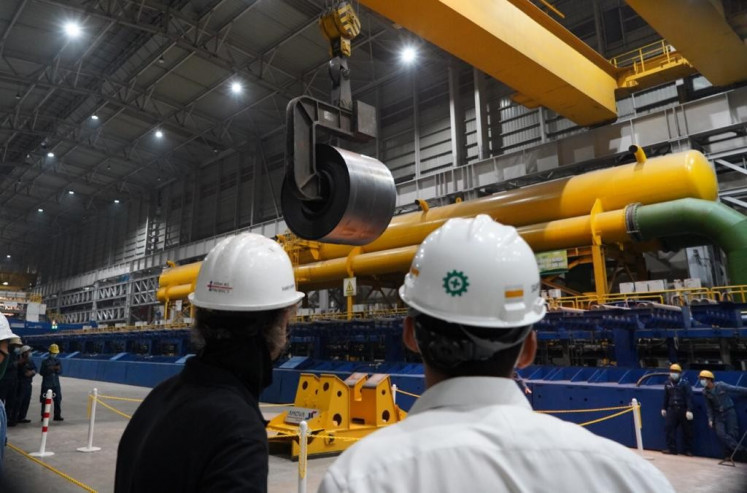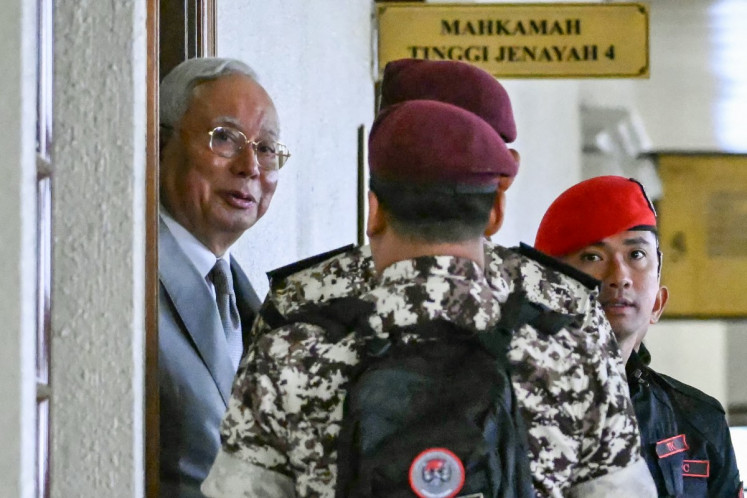Popular Reads
Top Results
Can't find what you're looking for?
View all search resultsPopular Reads
Top Results
Can't find what you're looking for?
View all search resultsAnalysis: US tariffs present challenges, opportunities for Indonesia
Change text size
Gift Premium Articles
to Anyone
U
nited States President Donald Trump has reignited global trade tensions by imposing reciprocal import tariffs on 180 trading partners, with rates starting at 10 percent and rising significantly for 60 countries, including Indonesia, which now faces a 32 percent tariff, although now paused for three months. While Indonesia benefited modestly from the first US-China trade war in 2018, the dynamics of this second wave of trade retaliation demand a recalibrated strategy to unlock potential economic gains.
The US has long grappled with a twin deficit, budget and current account, dating back to the 1980s. President Trump has consistently blamed trade deficits on unfair practices by key partners such as China, Canada, Mexico and, to some extent, Indonesia. His administration argues that reducing these imbalances is essential to protecting American industry and jobs.
However, many economists warn that these policies distort the natural flow of trade, which should ideally capitalize on comparative and competitive advantage, the ability of countries to produce certain goods more efficiently than others. While US money may flow out through trade deficits, it often returns in the form of foreign investment, an area where the US maintains a strong competitive edge.
China remains the US' largest competitor in trade, with bilateral trade reaching US$585 billion in 2024 and a US trade deficit of $295 billion. As a result of tit-for-tat tariffs, China’s share of US imports fell from 21 percent in 2016 to 13 percent in 2024. Much of China's exports have been rerouted through Southeast Asian countries, including Vietnam, Malaysia, Thailand and Indonesia.
Still, Indonesia was hit with one of the higher tariff rates among ASEAN countries, ranking eighth with a 32 percent duty. This figure, derived through a simplified and questionable formula based on trade deficits, has raised concerns about the fairness and transparency of the US approach.
The US is Indonesia’s second-largest non-oil and gas export destination after China, accounting for 10.6 percent of total exports. From 2018 to 2024, Indonesia’s exports to the US surged by 43 percent, expanding the trade surplus from $8.6 billion to $14.34 billion. But the Trump administration has also criticized Indonesia's use of non-tariff barriers, such as local content requirements and foreign exchange rules on natural resource exports.
During the first trade war, Indonesia gained from trade diversion and increased foreign direct investment (FDI) as companies looked to relocate from China. Indonesia also took steps to expand its market access through regional agreements like the Regional Comprehensive Economic Partnership (RCEP), ASEAN Plus Three (a framework for economic cooperation between ASEAN and China, Japan and South Korea) and BRICS.
Your Opinion Matters
Share your experiences, suggestions, and any issues you've encountered on The Jakarta Post. We're here to listen.
Thank you
Thank you for sharing your thoughts. We appreciate your feedback.



















